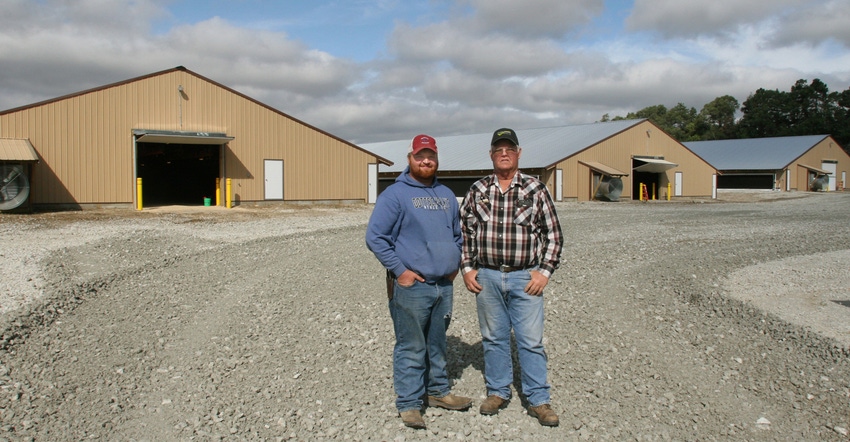
When Colten Schafersman graduated from college in 2013, it wasn’t exactly the ideal time to get involved in row crop farming.
“That was the year prices tanked. Over the last five years, I’ve rented farm ground with my grandfather, but it just covers my living expenses. It doesn’t really give me a chance to buy back into the farming operation,” says Schafersman.
That’s why Schafersman recently built three chicken barns — two pullet barns and one rooster barn — on 100 acres near Hooper, Neb. Schafersman’s is one of over 100 sites being built to raise chickens for Lincoln Premium Poultry — the company that’s managing the production process for the new state-of-the-art Costco poultry processing facility in Fremont, Neb. Most of the sites will be broiler sites, but Schafersman’s operation is one of the few raising pullets.
In late September, Schafersman and Lincoln Premium Poultry hosted an open house at the new pullet site, drawing more than 500 people, including neighbors and elected officials as well as prospective poultry producers.
“It was very positive. The nice thing about it is it gave people the opportunity to get a sense of what exactly this will look like, and also see a lot of the technology we’ll be using and get comfortable with it,” says Jessica Kolterman, external affairs spokesperson at Lincoln Premium Poultry. “I think the biggest challenge from the standpoint of prospective growers is having no concept of what this is actually like. There aren’t a lot of places in Nebraska they can touch it and feel it and stand in those barns. This provides them a good opportunity to see it in person and get comfortable with this kind of operation.”

OPEN HOUSE: This is an overhead view of the newly constructed poultry site near Hooper, Neb. In late September, Colten Schafersman and Lincoln Premium Poultry hosted an open house at the new site, drawing more than 500 people.

Keeping family on farm
And, most prospective growers and growers that have signed on are families hoping to either keep a young family member on the farm, or bring them back to the farm.
“We hear that universally, almost from every family we talk to,” says Kolterman. “The interesting thing is, it’s not just the young people that are involved. In a lot of our meetings we have a grandfather, mom and dad, or grandson or granddaughter. Some of the younger people operating today talk about their hopes that they will be able to eventually pass it on to their kids.”
“With the barns here and LPP, I want to be able to keep my family here. I’m actually in the process of buying the 100 acres where the chicken barns are,” Schafersman adds. “We've been here since 1880; my grandfather’s grandfather was born on the homeplace in 1882. I’ve got a son, and in 15 years if Braden wants to be here, I want him to have the opportunity to like I have."
The pullet site will help diversify his operation, and bring another revenue stream to the farm, he says. “With the bank payment we should be able to clear $80,000 to $90,000 per year,” Schafersman adds. “On row crop acres right now, you’re not making a big profit. With the pullets, I get a check every week. It’s a little bit more stability — more guaranteed income.”
While each group of broiler chickens will populate barns for about six-and-a-half weeks before leaving for the processing plant, birds will be at Schafersman’s two pullet barns for 21 weeks before leaving to go to a breeding site.
At the time of this article, there are approximately 45 sites under construction. And, as the processing facility prepares to go online in September 2019, Lincoln Premium Poultry needs a total of 432 broiler barns — with four barns on each site — to meet the plant’s daily needs. Barns will continue to be built into 2020 as the plant ramps up, Kolterman notes.
“We have a 47-week ramp-up. You don’t want to build all these barns right away, because there is going to be interest on the barns, and there aren’t any chickens in them yet,” Kolterman says. “So, you have to build them in the order you need them to meet the demand of the processing facility.”
Lincoln Premium Poultry is still seeking growers to build broiler barn sites, although the opportunity won’t be available forever — LPP is only going to build as many barns as needed.
To learn more about getting started in the poultry business, interested growers can contact Willow Holoubek, grower engagement manager at Lincoln Premium Poultry, at 402-704-2200.
About the Author(s)
You May Also Like






